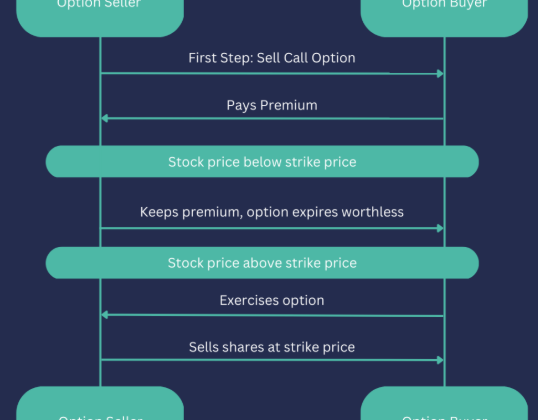
The financial sector in India continues to be a powerhouse of economic activity, offering a wide array of rewarding career options. As India’s economy expands, the demand for skilled finance professionals is soaring across industries. Those with the right qualifications and capabilities can find themselves in roles that not only offer professional fulfillment but also impressive compensation.
If you’re aiming to build a future in finance, here’s a look at the top-paying roles you should consider in 2025.
1. Investment Banker
Job Role:
Investment bankers guide companies in raising capital, managing mergers and acquisitions, and navigating securities markets. Their role involves strategic financial planning, valuation analysis, and deal structuring.
Earnings:
Annual salaries can vary between ₹12 lakhs and ₹50 lakhs, depending on experience and deal volume.
Qualifications:
A degree in finance, business, or economics is essential. Professional credentials like the CFA add a competitive edge.
Career Path:
Over time, professionals can move up to senior positions such as Managing Director or Head of Investment Banking.
2. Chartered Accountant (CA)
Job Role:
CAs handle financial reporting, tax planning, auditing, and ensuring regulatory compliance. They play a central role in guiding businesses on financial health and legal obligations.
Earnings:
Salaries generally range from ₹7 lakhs to ₹30 lakhs annually, based on experience and specialization.
Qualifications:
Clearing all levels of the CA exam administered by ICAI is mandatory. Specializing in taxation or forensic accounting can enhance career prospects.
Career Path:
CAs often progress to executive roles like Finance Director or Chief Financial Officer.
3. Financial Analyst
Job Role:
Financial analysts assess business performance, prepare forecasts, and offer insights to support investment decisions. Their work often involves evaluating market trends and interpreting financial data.
Earnings:
Typically between ₹4 lakhs and ₹12 lakhs per year, with potential for higher income at larger firms or senior levels.
Qualifications:
A degree in finance or economics is common. Many pursue the CFA designation or other financial certifications.
Career Path:
Analysts can advance to roles such as Portfolio Manager or Senior Investment Advisor.
4. Risk Manager
Job Role:
These professionals identify financial risks and develop strategies to mitigate them. They work closely with management to maintain financial stability and minimize exposure.
Earnings:
Depending on industry and experience, compensation may range from ₹10 lakhs to ₹35 lakhs annually.
Qualifications:
Degrees in economics, finance, or business are standard. Certifications like FRM or PRM are often required.
Career Path:
Many risk managers grow into leadership roles such as Head of Risk or Chief Risk Officer.
5. Actuary
Job Role:
Actuaries apply mathematical models to assess risks in sectors like insurance, pensions, and finance. Their forecasts help organizations allocate resources effectively.
Earnings:
They can earn between ₹10 lakhs and ₹50 lakhs a year, making it one of the best-compensated finance careers.
Qualifications:
Becoming an actuary requires clearing exams conducted by the Institute of Actuaries of India.
Career Path:
Experienced actuaries may lead entire departments or become Chief Actuary.
6. Portfolio Manager
Job Role:
Portfolio managers oversee asset allocations, select investments, and manage portfolios for individuals or institutions to maximize returns.
Earnings:
Salaries vary from ₹8 lakhs to ₹40 lakhs, depending on the value and performance of managed portfolios.
Qualifications:
A finance or business degree is expected, and certifications like CFA are commonly held.
Career Path:
Successful managers can advance to senior positions like Fund Manager or Chief Investment Officer.
7. Corporate Finance Manager
Job Role:
They focus on budgeting, capital structuring, mergers, and financial strategy for companies, helping optimize long-term value.
Earnings:
Typically earn between ₹10 lakhs and ₹30 lakhs annually.
Qualifications:
An academic background in accounting or finance is a must. Many pursue MBAs or CFA credentials.
Career Path:
This role can be a stepping stone to positions such as Finance Controller or CFO.
8. Private Equity Analyst
Job Role:
Analysts in private equity conduct due diligence on investment opportunities and help manage funding deals in private companies.
Earnings:
They can earn from ₹12 lakhs to ₹35 lakhs per annum.
Qualifications:
A finance degree and strong analytical skills are essential. A CFA designation adds credibility.
Career Path:
With experience, analysts can be promoted to Investment Manager or Partner.
9. Financial Planner
Job Role:
Financial planners assist individuals in managing their personal finances. They help with budgeting, investments, insurance, and retirement plans.
Earnings:
Income can range from ₹3 lakhs to ₹15 lakhs annually, with potential for growth depending on client base.
Qualifications:
Typically requires a finance degree. Earning the CFP (Certified Financial Planner) credential is beneficial.
Career Path:
Planners often evolve into wealth managers or start independent advisory practices.
10. Tax Consultant
Job Role:
Tax consultants help individuals and companies with tax planning and compliance, ensuring legal and efficient handling of tax obligations.
Earnings:
Annual salaries range from ₹5 lakhs to ₹20 lakhs, depending on experience and client scope.
Qualifications:
A degree in finance, accounting, or law is needed, along with specialization in taxation.
Career Path:
They may eventually establish their own consultancies or rise to senior advisory roles.
Factors That Influence Earnings in Finance Careers
- Academic Credentials: Higher education and industry-recognized certifications can lead to better pay.
- Professional Experience: More years in the field typically translate to higher earning potential.
- Industry and Role: Finance roles in investment banking, private equity, or large multinational firms tend to offer higher salaries.
- City of Employment: Tier-1 cities like Mumbai and Delhi often offer higher compensation due to cost of living and business density.
Starting Your Journey in High-Paying Finance Roles
- Develop Key Skills: Focus on areas such as financial analysis, modeling, accounting, and regulatory understanding.
- Network Strategically: Engage with professionals and attend finance-related events to expand your industry presence.
- Gain Experience: Begin with internships or junior roles to build credibility and industry insight.
Conclusion
The Indian finance sector is teeming with opportunities for individuals seeking high-paying and impactful careers. From investment banking to tax consultancy, each role offers distinct responsibilities and rewards. Choosing the right path depends on your interests, educational background, and long-term goals. With dedication, continuous learning, and strategic planning, a prosperous career in finance is well within reach.
















